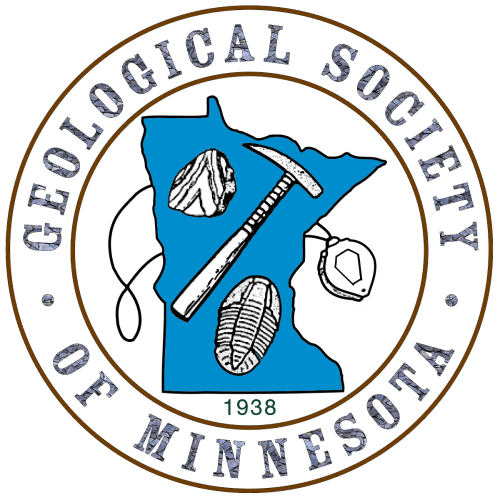Road Marker Information
Description:
PDF map of Rice Lake State Park
Enter Road Address in your cars GPS:
8485 Rose St, Owatonna, MN 55060
OR
Enter Geographical Coordinates in your cars GPS:
Degrees Lat Long: 44.092470, -93.064443
Latitude: 44°05’32.9″N
Longitude: 93°03’52.0″W
Country: Steele County
Where Found:
Located on county road 19 in Rice Lake State Park
Marker Number:172
Marker Composition:
Text on Marker:
GEOLOGY OF THE RICE LAKE AREA
The water in Rice Lake must have a difficult time deciding: its two outlet streams flow in opposite directions! Maple Creek, which is on the west side of the lake, flows westward, while the South Branch, which is on the east side of the lake, flows eastward. Although lakes often have multiple inlets, only rarely do they have more than one outlet, especially ones that flow in opposite directions. This unusual drainage exists because the lake straddles a rise on a glacial deposit that was created and modified by separate glacial advances.
About 14,000 years ago, glacial ice advancing through the Manitoba region followed the lowlands of the Red River valley and the Minnesota River valley and reached south into central Iowa. The eastern edge of this ice lobe reached to about two kilometers west of Rice Lake. Along this melting margin, glacial sediment (clay, silt, sand, gravel, and boulders) was deposited, forming a broad line of low hills oriented north to south, called the Bemis moraine.
The presence of gently rolling knob-and-kettle terrain east of the Bemis moraine indicates that, at some earlier time, another ice lobe similarly reached east-ward, but farther, to just past Rice Lake. As this earlier ice melted, powerful streams under the ice carved elongated depressions in the land, called tunnel valleys. Be-cause of the great pressure from the ice above, the meltwater actually flowed uphill slightly, over moraine sediments, until it reached the edge of the glacier. There the pressure was released, and the meltwater coursed eastward into what is now the Zumbro River.
Today, modern streams flow in former glacial stream valleys. Maple Creek occupies one of these tunnel valleys, but now the water flows west, down its slope, contrary to its glacial predecessor. Rice Lake occupies a shallow dip within this tunnel valley. The shallow water of the lake creates an ideal habitat for wild rice, which grows naturally in abundance and was first harvested by Native Americans.
Erected by the Geological Society of Minnesota in partnership with the Minnesota Department of Transportation, the Minnesota Geological Survey, and the Minnesota Department of Natural Resources. 2003
Region: Southeastern Region
Date Updated: 20160621
Information Needed:
- Verify Existance
Condition of Marker:
Do it Yourself Region: Karst Country – Southeast Corner
Verification: Not installed yet
